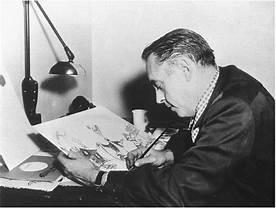
for a character was a detective who worked for the Chicago police department. He then submitted this character idea to the syndicate (Chicago Tribune New York News Syndicate), which suggested changing his name to Dick Tracy and creating a story where he worked for the Chicago police department. Dick Tracy was first published on October 4, 1931, and he was instantly popular. Dick Tracy would be the most popular comic strip character in the United States. In April 1937, a poll of adult comic strip readers in Fortune voted Dick Tracy their third favorite comic strip after Little Orphan Annie and Popeye. However, Dick Tracy was also attacked by some journalists as being too violent.1946: The two-Way Wrist Radio is the first wristwatch radio. It was invented by Martin Cooper who was working at Motorola at the time. Cooper is credited with inventing the mobile phone. It was originally called the Wrist Radio and was an upgrade to the original wrist radio. In 1964, the two-Way Wrist Radio became a two-Way Wrist TV and was the first wristwatch TV. The watch was also upgraded to include a built-in camera and microphone.
Now what about the animation Cartoons: The cartoon series was made from 1961 to 1962 by United Productions Of America(UPA)it was called the "The Dick Tracy Show".
In the episodes, policeman Dick Tracy was supervisor over a few subordinate characters to fight crime each week, contacting them on his two-way wristwatch radio. Dick Tracy himself hardly ever appeared in the cartoons at all. His boss would be barking orders into a intercom to Tracy, with Tracy answering "Okay, chief, I'll get onto it right away."
Negative Controversy:
The Dick Tracy Show was pulled from the air in the mid-1970s and mid-1980s, some people seen it as ethnic stereotyping and was not seen for years later. This was do to characters Joe Jitsu, an Asian bucktooth character and Go Go Gomez a Latino character. Here is a cartoon short so you can see for yourself. UPA chairman Henry Saperstein 1990 said this," it's just a cartoon, for goodness sake". Well some folks just don't get it !, maybe he would if he was Asian or Latino he might feel differently. BJ 🙈🙉🙊










